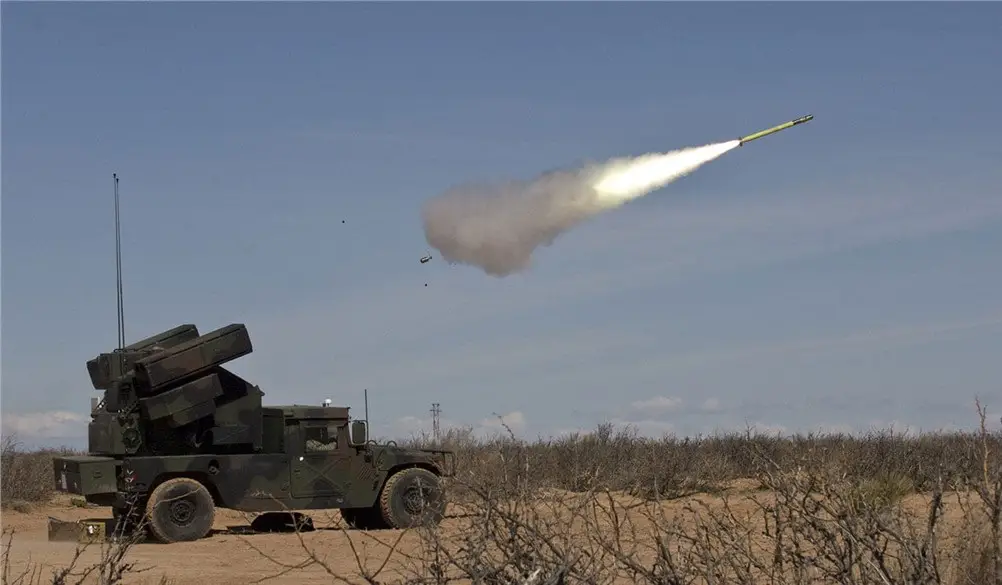The U.S. State Department has approved a significant potential Foreign Military Sale (FMS) to the Egyptian government, aimed at enhancing its air defense capabilities. Valued at approximately $740 million, the proposed deal includes the acquisition of 720 Stinger missiles, along with a broad range of logistical support elements designed to sustain Egypt’s current Avenger air defense systems. Egypt’s request includes not only the 720 Stinger missiles but also 20 Product Verification Flight Test (PVFT) munitions. This highlights a focused effort on ensuring the operational reliability of the system within Egypt’s existing defense infrastructure. Alongside the missiles, the package incorporates essential non-major defense equipment (non-MDE) such as spare and repair parts, testing equipment, and a comprehensive support framework. This will include U.S. Government and contractor services, which are crucial for the system’s long-term sustainment and operational effectiveness. The main contractor for the production and support of the Stinger missile system will be RTX Corporation, based in Tucson, Arizona, further strengthening the ties between U.S. defense industries and allied nations like Egypt.
The FIM-92 Stinger is an American man-portable air-defense system (MANPADS) that operates as an infrared homing surface-to-air missile (SAM). The FIM-92 Stinger is a passive surface-to-air missile that can be shoulder-fired by a single operator (although standard military procedure calls for two operators – team chief and gunner). The missile is 5.0 ft (1.52 m) long and 2.8 in (70 mm) in diameter, with 3.9 in (100 mm) fins. The missile itself weighs 22 lb (10.1 kg), while the missile with its launch tube and integral sight, fitted with a gripstock and identification friend or foe (IFF) antenna, weighs approximately 34 lb (15.2 kg). It has a targeting range of up to 15,700 feet (4,800 m) and can engage low-altitude enemy threats at up to 12,500 feet (3,800 m). Used by U.S. forces and over 29 other countries, the Stinger is a highly versatile system, capable of being deployed from various platforms including ground vehicles, helicopters, and drones. It can be adapted to fire from a wide variety of ground vehicles, and from helicopters and drones as the Air-to-Air Stinger (ATAS).

In Egypt’s case, these missiles will be integrated with the AN/TWQ-1 Avenger system. The Avenger Air Defense System is an American self-propelled surface-to-air missile system which provides mobile, short-range air defense protection for ground units against cruise missiles, unmanned aerial vehicles, low-flying fixed-wing aircraft, and helicopters. The Avenger was originally developed for the United States Armed Forces and is currently used by the U.S. Army. The Avenger system was also used by the U.S. Marine Corps. The Avenger comes mainly in three configurations, the Basic, Slew-to-Cue, and the Up-Gun. The Basic configuration consists of a gyro-stabilized air defense turret mounted on a modified heavy Humvee. The Slew-to-Cue (STC) subsystem allows the commander or gunner to select a FAAD C3I reported target for engagement from a display on a Targeting Console developed from VT Miltope’s Pony PCU. The Up-Gun Avenger was designed to allow the Avenger to perform unit and asset defense in addition to its air defense mission. The right missile pod was removed and the M3P 12.7 mm (.50) cal machine gun was moved to the pod’s former position.
The Stinger and Avenger systems will enable Egypt to protect critical infrastructure, such as transportation hubs and borders, against a variety of air threats. This sale comes as part of a broader strategy to support U.S. foreign policy and national security goals by fortifying the defensive capabilities of key allies in the Middle East. Egypt remains a pivotal player in maintaining regional political stability and economic growth. The acquisition of these advanced Stinger missiles will significantly enhance Egypt’s ability to counter contemporary threats posed by hostile actors in the region. The deal also offers the benefit of increasing interoperability between Egypt’s forces and U.S. military systems, as well as with other regional security partners. This strengthens the operational flexibility and cohesion necessary to address shared security challenges. Notably, the sale is not expected to shift the military balance in the Middle East, ensuring stability while bolstering Egypt’s defense posture.













